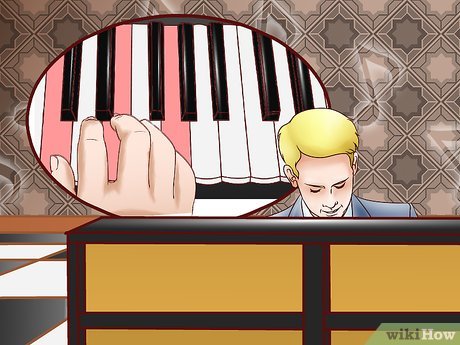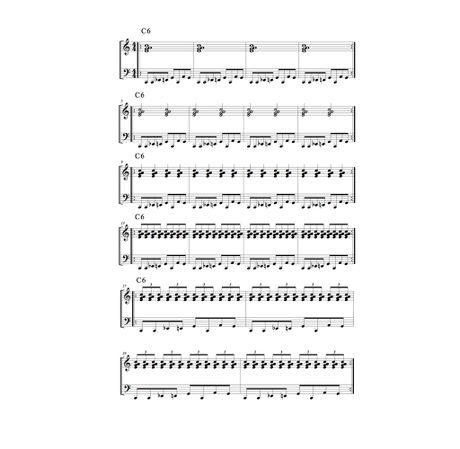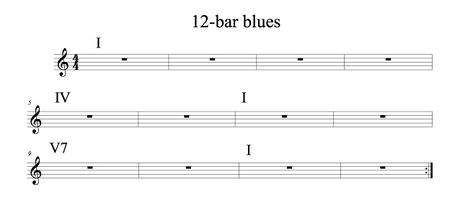How to Play Boogie Woogie Piano
Part 1 of 4:
Getting Started
-
 Listen to the masters. Music is a language, and like learning any language, you need to listen to its native speakers. Start by listening to some of the old masters to get an idea of their rhythms, phrasing, timing, and styles. Here are some good people to start with: Clarence "Pinetop" Smith, Cripple Clarence Lofton, Jabo Williams, Montana Taylor, Jimmy Yancey, Hersal Thomas, Albert Ammons, Meade Lux Lewis, Pete Johnson, Big Maceo Merriweather, Otis Spann, Amos Milburn, Professor Longhair and James Booker. Download their music and listen a little bit to them every day to start getting the true sounds of boogie-woogie in your ears!
Listen to the masters. Music is a language, and like learning any language, you need to listen to its native speakers. Start by listening to some of the old masters to get an idea of their rhythms, phrasing, timing, and styles. Here are some good people to start with: Clarence "Pinetop" Smith, Cripple Clarence Lofton, Jabo Williams, Montana Taylor, Jimmy Yancey, Hersal Thomas, Albert Ammons, Meade Lux Lewis, Pete Johnson, Big Maceo Merriweather, Otis Spann, Amos Milburn, Professor Longhair and James Booker. Download their music and listen a little bit to them every day to start getting the true sounds of boogie-woogie in your ears!
Part 2 of 4:
Learning the Left Hand
-
 Learn at least one left hand bass pattern. The left hand is the most important feature of boogie-woogie piano playing and without a steady bass pattern there is no hope of playing true boogie-woogie. Most left hand patterns are '8-to-the-bar', meaning there are eight eighth-notes played in every bar. Learn at least one left hand bass pattern and be able to play it automatically and independently of the right hand.
Learn at least one left hand bass pattern. The left hand is the most important feature of boogie-woogie piano playing and without a steady bass pattern there is no hope of playing true boogie-woogie. Most left hand patterns are '8-to-the-bar', meaning there are eight eighth-notes played in every bar. Learn at least one left hand bass pattern and be able to play it automatically and independently of the right hand. -
 Develop hand independence. This is a great exercise for getting your foot in the door to achieving left hand independence with any new bass pattern you learn.
Develop hand independence. This is a great exercise for getting your foot in the door to achieving left hand independence with any new bass pattern you learn.- For this example, use your boogie-woogie left hand pattern from Step two. Play the Shuffle pattern (staying on the C chord) in the left hand, and introduce increasingly complicated rhythms in the right hand, using a C6 chord in the first inversion.
- Practice this technique over the three chords of a 12-bar blues. The most common musical form for boogie-woogie songs is a 12-bar blues[1] It consists of three chord changes, the I chord, the IV chord, and the V chord. In the key of C, the I chord is C, the IV chord is F, and the V chord is G. It is absolutely essential that you memorize the 12-bar blues form.
- You can simply transpose the voicing used for C6 to the keys of F and G, or you can try these different voicings: to make an F chord, simply lower the E to an Eb from your C6 chord. This will make an F9 chord. For a G chord, shift your fingers slightly over to f-g-b-d. Practice the hand independence exercise shown above in the new keys of F (starting the left hand pinky finger on F, and playing an F chord in the right hand) and G (starting the left hand pinky finger on G, and playing a G chord in the right hand).
Part 3 of 4:
Learning the Right Hand
-
 Learn a right hand lick. In boogie-woogie piano playing, when the right hand is not playing chords to accompany vocals or another soloist, it usually plays licks. According to Arthur Migliazza's book 'How To Play Boogie Woogie Piano," there are only 8 primary licks, from which infinite variations and combinations are possible. Lick #1 is the most basic, and consists of keeping the right hand in the basic position of a C major triad.
Learn a right hand lick. In boogie-woogie piano playing, when the right hand is not playing chords to accompany vocals or another soloist, it usually plays licks. According to Arthur Migliazza's book 'How To Play Boogie Woogie Piano," there are only 8 primary licks, from which infinite variations and combinations are possible. Lick #1 is the most basic, and consists of keeping the right hand in the basic position of a C major triad. -

 Learn some variations of your first lick. Learn some variations of the lick so that you have more material to work with in your song.
Learn some variations of your first lick. Learn some variations of the lick so that you have more material to work with in your song. - Practice the lick and variations while playing the left hand bass pattern. The next step is to introduce your right hand licks to your left hand boogie-woogie bass pattern. Practice in C, F and G separately. [Note: you can transpose these licks to F and G, or just play them in C while the left hand changes! It still works!]
-
 When you are comfortable playing the licks in all three keys, put them in the context of a 12-bar blues.
When you are comfortable playing the licks in all three keys, put them in the context of a 12-bar blues.
Part 4 of 4:
Putting it Together with an Introduction and Ending
-
 Learn an introduction. Introductions to boogie-woogie songs vary widely. A very common way to start a boogie-woogie is by simply playing the left hand bass pattern for four measure by itself, and then introduce the right hand.Another common way to begin a boogie-woogie is by using the first two chords of a turnaround progression, the I7 and I dim 7. In the key of C this means C7 and C diminished 7.
Learn an introduction. Introductions to boogie-woogie songs vary widely. A very common way to start a boogie-woogie is by simply playing the left hand bass pattern for four measure by itself, and then introduce the right hand.Another common way to begin a boogie-woogie is by using the first two chords of a turnaround progression, the I7 and I dim 7. In the key of C this means C7 and C diminished 7.- An intro of this sort is usually four measures in duration and consists of going back and forth between these two chords. These four measures count as the first four measures of the 12-bar form and when the left hand comes in with the bass pattern it is on the IV chord.
-
 Learn an ending. The simplest way to end a boogie-woogie is by playing this figure with the left hand by itself.
Learn an ending. The simplest way to end a boogie-woogie is by playing this figure with the left hand by itself. - Combine a repeating, rhythmic bass pattern in the left hand with chords and licks in the right hand. Use an intro to start and an ending to finish and now you're playing boogie woogie!
5 ★ | 1 Vote
You should read it
- The application automatically finds song chords and YouTube videos
- The LEFT function, how to use the left-hand string cutting function in Excel
- How to set up a computer mouse for lefties
- Points to keep in mind when buying hand dryers
- LEFT function in SQL Server
- How to make hand sanitizer dry at home
- LEFT JOIN in SQL
- Why does the clock, minute hand of the watch run from right to left without the opposite direction?
May be interested
- Let's review FPT Play online application
 in the past, we used to think that when watching television, we often needed to watch tv, but in fact, on the phone, we could still do it with fpt play application.
in the past, we used to think that when watching television, we often needed to watch tv, but in fact, on the phone, we could still do it with fpt play application. - How to Make a Basic Beat in Fruity Loops
 this wikihow teaches you how to create a simple beat in fl studio 12. while fl studio's interface appears complicated at first glance, you can use the built-in channel rack and piano keyboard to create a simple hip-hop- or r&b-style beat....
this wikihow teaches you how to create a simple beat in fl studio 12. while fl studio's interface appears complicated at first glance, you can use the built-in channel rack and piano keyboard to create a simple hip-hop- or r&b-style beat.... - Instructions for purchasing applications on Google Play do not need a visa card
 for those who use viettel phone sim, they can now register to buy applications and games on google play through the phone number they are using.
for those who use viettel phone sim, they can now register to buy applications and games on google play through the phone number they are using. - Some common error codes on CH Play and how to fix them
 ch play (google play store) is probably an application very familiar to those of you who use the android operating system on mobile devices. although it is an application that is invested by google to develop and upgrade continuously, ch play is not immune to unexpected errors.
ch play (google play store) is probably an application very familiar to those of you who use the android operating system on mobile devices. although it is an application that is invested by google to develop and upgrade continuously, ch play is not immune to unexpected errors. - Google Play will probably become 'egg-laying chicken'
 analyst mark may of consulting firm citigroup has recently stated that the upcoming google play online app store will become an 'egg-laying' bringing huge amounts of money to google.
analyst mark may of consulting firm citigroup has recently stated that the upcoming google play online app store will become an 'egg-laying' bringing huge amounts of money to google. - How to update the Play Store app for Android
 google updates the play store automatically in the background. however, for certain reasons, the play store may stop working and no longer automatically update. in the article below, tipsmake will introduce you to some ways to manually update the play store.
google updates the play store automatically in the background. however, for certain reasons, the play store may stop working and no longer automatically update. in the article below, tipsmake will introduce you to some ways to manually update the play store. - How to fix error 492 on Google Play
 android users use google play to download, install and update various apps on their smartphones but sometimes they encounter errors on the google play store. this article will guide you how to fix error 492 on google play.
android users use google play to download, install and update various apps on their smartphones but sometimes they encounter errors on the google play store. this article will guide you how to fix error 492 on google play. - Top 9 best MIDI Controller for musicians
 midi controller (midi controller) allows you to control virtual instruments with real keys or blank pad, making the experience more flexible. below is a list of the best midi controllers for you to choose from.
midi controller (midi controller) allows you to control virtual instruments with real keys or blank pad, making the experience more flexible. below is a list of the best midi controllers for you to choose from. - How to download CH Play and install Google Play on the phone
 if you're having trouble and can't update google play store to the latest version, you can manually install google play store on your android device.
if you're having trouble and can't update google play store to the latest version, you can manually install google play store on your android device. - TOP fun games to play with friends like Play Together
 top fun games to play with friends like play together, top multiplayer games with fun gameplay and graphics like play together, helping to connect people
top fun games to play with friends like play together, top multiplayer games with fun gameplay and graphics like play together, helping to connect people



















 How to Go Clubbing
How to Go Clubbing How to Use a Flash Pass at Six Flags
How to Use a Flash Pass at Six Flags How to Title Your Work of Art
How to Title Your Work of Art How to Look Like You Are on Drugs
How to Look Like You Are on Drugs How to Meet Band Members at a Concert
How to Meet Band Members at a Concert How to Make Fan Art
How to Make Fan Art